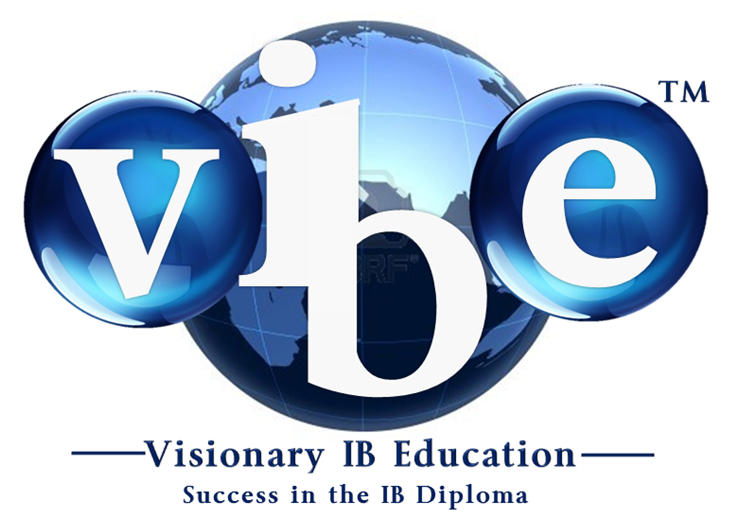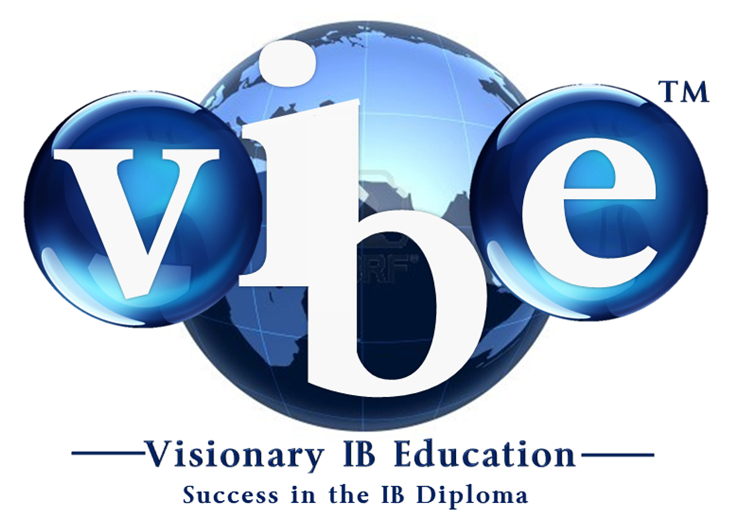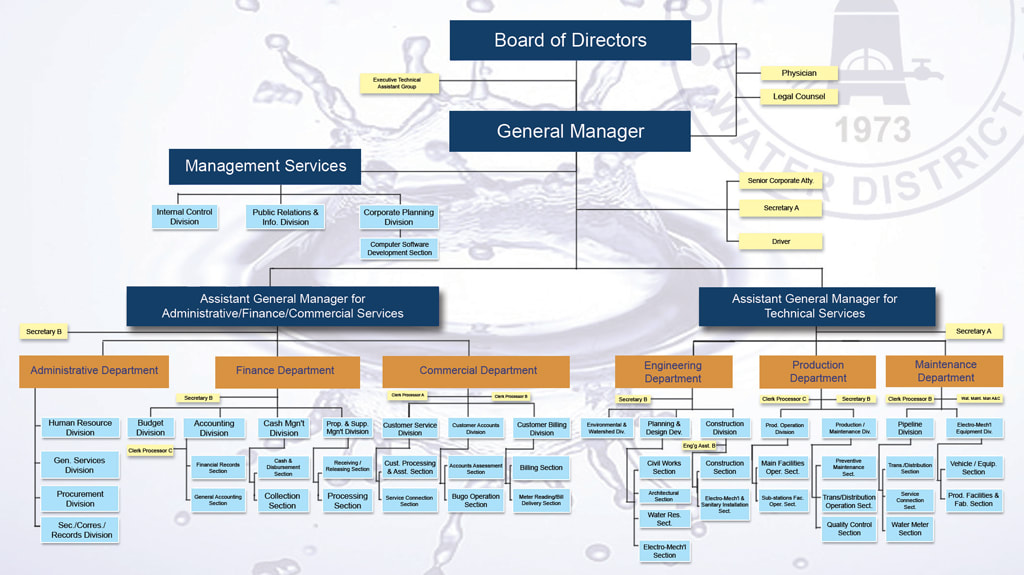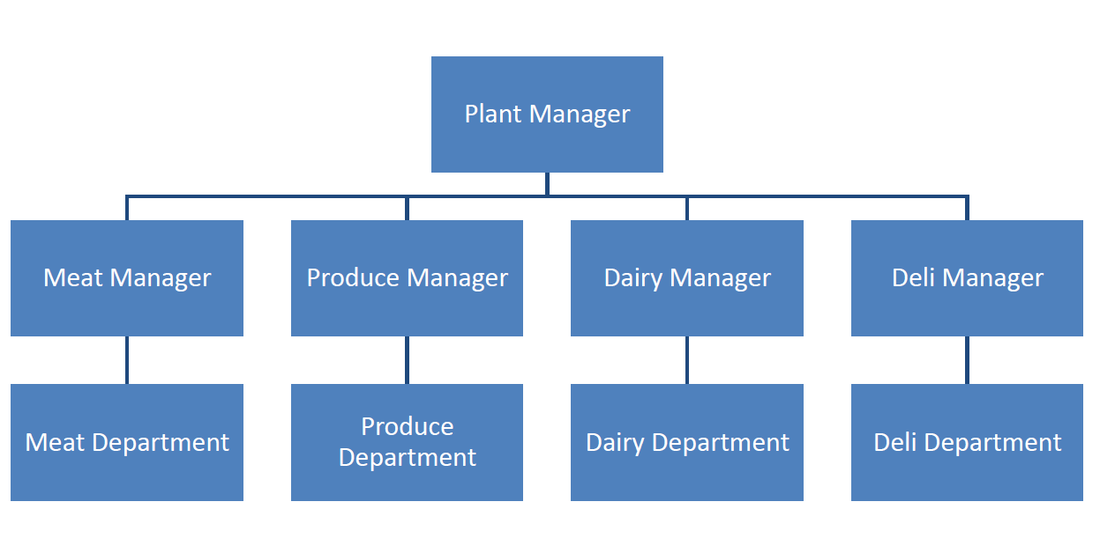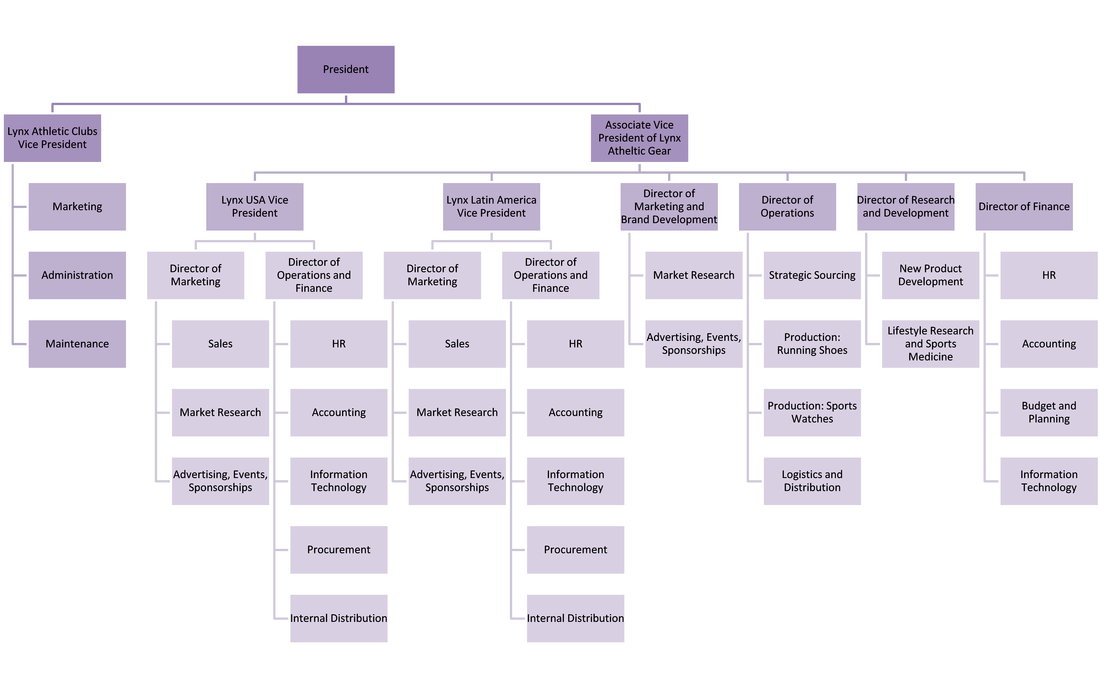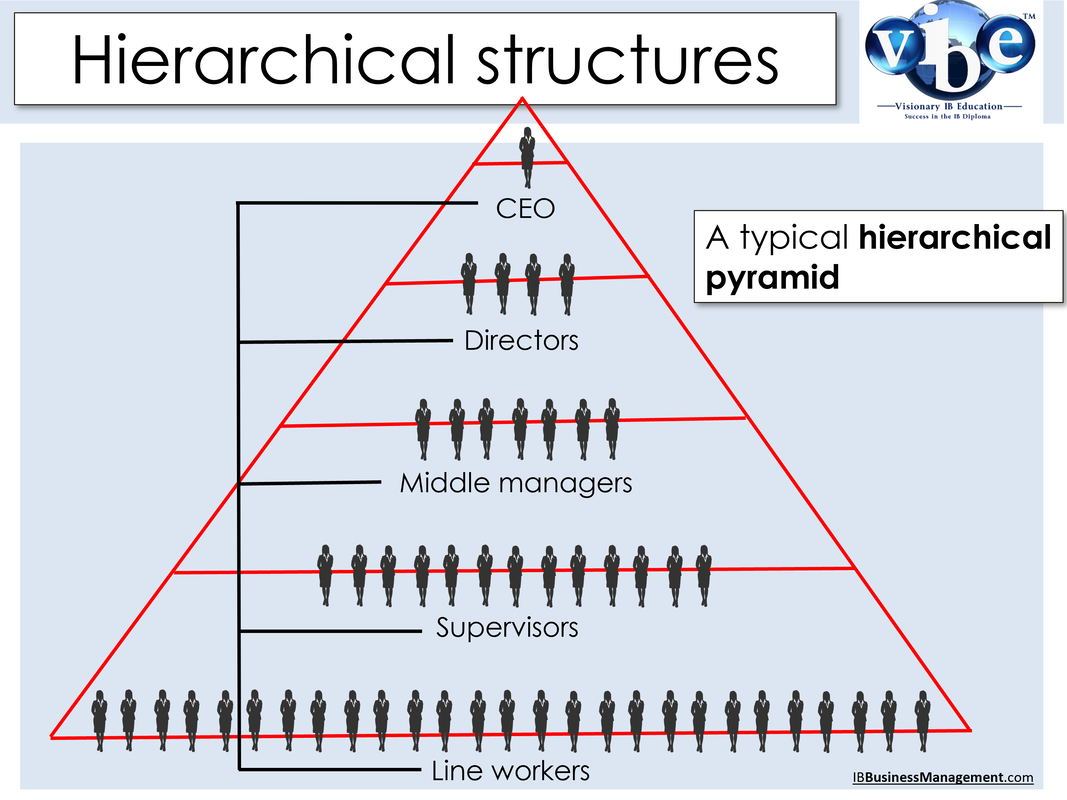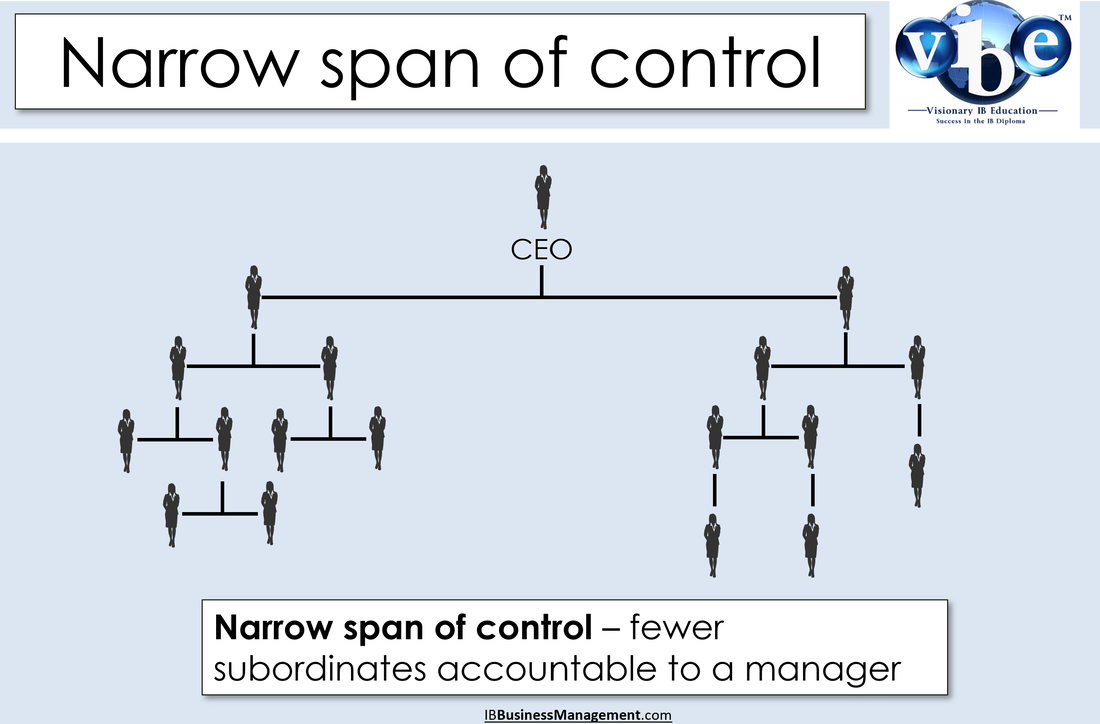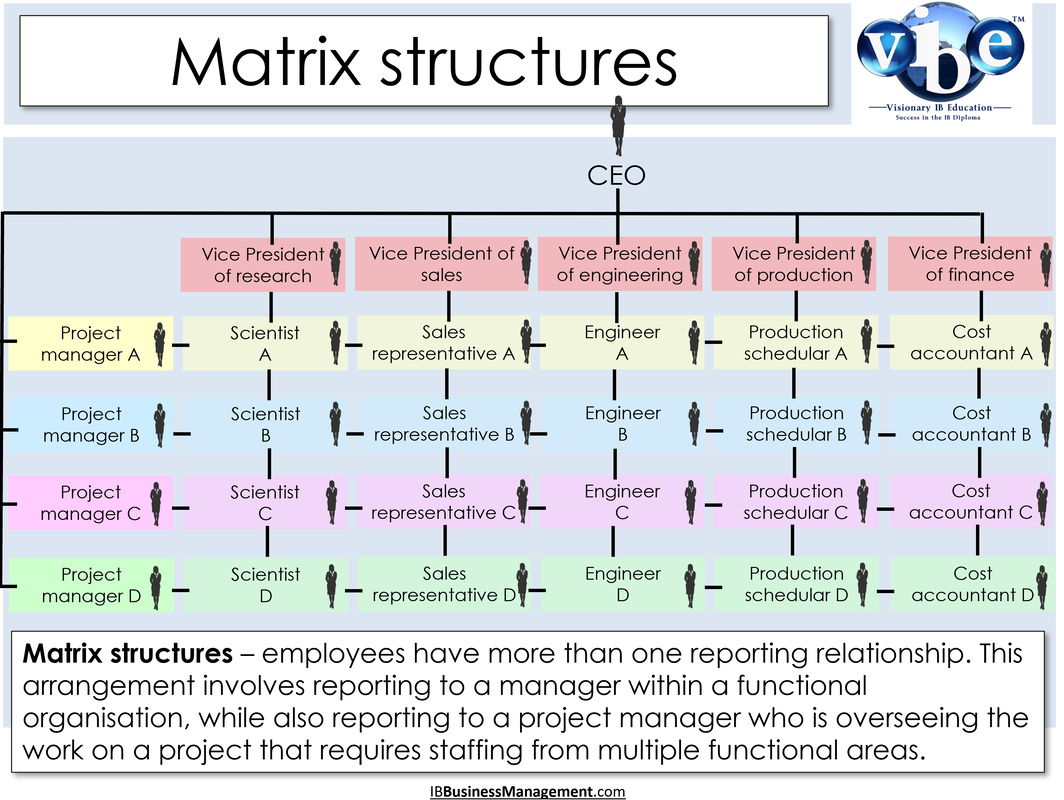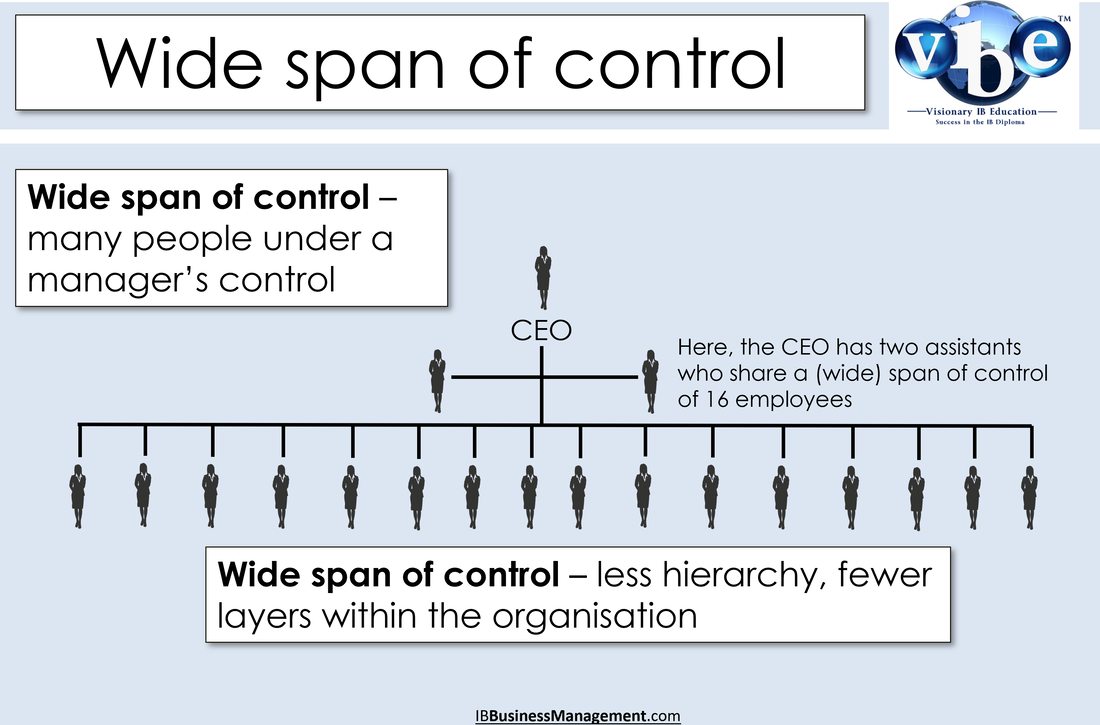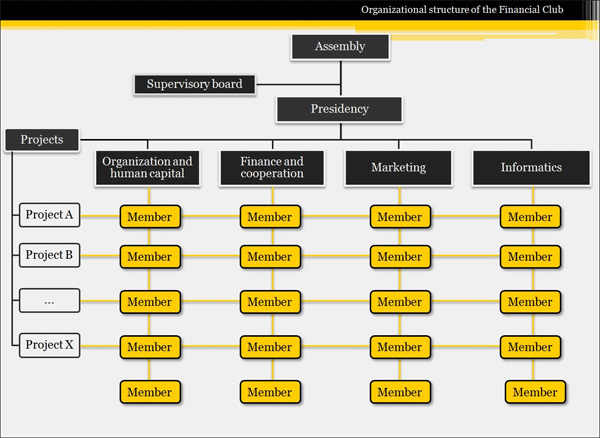|
IB Business Management:
2.2 Organisational Structure This topic looks at the various ways that businesses organise their human resources. In most businesses, there is a need for a formal and organised structure. This can help a business function more efficiently by determining accountability and responsibility.
|
|
Key learning outcomes:
|
Organisational structureA sole trader with no employees needs no organisational structure. Even if this sole owner were to take on just one worker or partner, a sense of formal organisation structure would become necessary. Who is to do what job? Who is responsible to whom and for which decisions? If a business expanded further with more workers, including supervisory staff, different departments or divisions, then the need for a structure would be even greater. This would allow the division of tasks and responsibilities to be made clear to all.
Organisational structure: The internal formal framework of a business that shows the way in which management is organised and linked together and how authority is passed through an organisation. Chain of command: This is the route through which authority is passed down an organisation – from the chief executive and the board of directors. Span of control: The number of subordinates reporting directly to a manager. Level of hierarchy: A stage of the organisational structure at which the personnel on it have equal status and authority. Introduction to organisational structure |
The formal structureA typical business structure is one that is based on functional department lines. Structures can be illustrated by means of an organisational chart.
Organisational chart: The diagrammatic representation of a firm's formal organisation structure. The organisational chart shows:
Essential statement: Structure will give employees more clarity, help manage expectations, enable better decision-making and provide consistency. Organisational charts also assign responsibility, organise workflow and make sure important tasks are completed on time. |
Corporate structure |
What is corporate structure? |
Three main types of organisational structure
Organisation by productGeographic organisationMany large organisations will have an organisational structure that is a combination of all three (function, product and region). As can be seen in the organisational structure above, this company operates a mixed functional and regional structure.
|
Organisation by functionOrganisation by Function: This is the most common organisational structure as businesses have different functional roles such as Finance, Production, Marketing and Human Resources.
Organisation by Product: A large business that requires a formal organisational structure is likely to be large enough to offer a range of products and it may make sense to structure the organisation in terms of product. For example, there may be specific human resource and marketing issues and special requirements associated with the different products that Yum! Brands runs (KFC, Taco Bell and Pizza Hut). This is especially true of conglomerate corporations. Organisation by Region: Many multinationals will organise themselves by geographic regions that they operate in. It will make sense to have different human resources, operations and marketing for its Chinese division and separate departments for Latin America, say. |
Hierarchical organisational structureA hierarchical (bureaucratic) organisational structure is an organisational structure where there are fewer and fewer people on each higher level.
Essential statement: In a hierarchical structure, employees know where to look for in terms of direction and they know whom they report to. Employees can focus on simpler tasks, rather than having to self-motivate and self-organise. |
Advantages of hierarchical organisational structuresA company that is structured with a hierarchically with a narrow span of control is likely to benefit from the following advantages:
|
Tall structure – narrow span of controlTall structure with a narrow span of control (a maximum of two staff directly subordinate).
With a tall organisational structure, i.e., one that has a narrow span of control (more hierarchical), employees may have more opportunities to ask questions, voice concerns or suggest changes. When managers have increased contact with those they supervise, they may learn of challenges that can affect employees' job satisfaction and productivity.
Organisational structures explainedThe matrix organisational structure |
Flat structure – wide span of controlFlat organisational structure with a wide span of control (note: CEO has two assistants).
A relatively flat (less hierarchical) organisational structure has few levels of hierarchy and a wider span of control where managers will be responsible for many subordinates and many management functions will be delegated. This organisational structure allows managers to have more direct reports and, therefore, more control over the work they produce.
Advantages of less hierarchical structures
Companies with flat organisational structures |
Factors influencing organisational structure |
Delegation |
DelayeringDelayering: The removal of one or more of the levels of hierarchy from an organisational structure.
Many businesses aim for a flatter organisational structure to reduce the costs of management salaries. This process is known as delayering. It leads to wider spans of control and increased delegation to subordinates. This development in organisational structures has been assisted by improvements in IT and communication technology, which enables senior managers to communicate with and monitor the performance of junior staff and widely dispersed departments. This has had the effect of diminishing the importance of the role of middle managers. |
Delegation: The assignment of authority to another person to carry out specific activities. It is the process of distributing and entrusting work to another person, and therefore one of the core concepts of management leadership; it is the passing authority down the organisational hierarchy.
Accountability: The obligation of an individual to account for his or her activities and to disclose results in a transparent way. Advantages of delegation
Disadvantages of delegation
|
Centralisation and decentralisationCentralisation: Keeping all of the important decision-making powers within head office or the centre of the organisation.
Decentralisation: Decision-making powers are passed down the organisation to empower subordinates and regional/product managers. Bureaucracy: An organisation's formal administrative rules governing its business activities. These will be written policies rules and procedures, as well as the formal company hierarchy. Different organisational structures explained |
Advantages of centralisation
Advantages of decentralisation
|
Changes in organisational structures
Handy's Shamrock OrganisationAnother way of representing this trend towards fewer core staff on permanent and salaried contracts was described by Charles Handy.
The three 'leaves' of an organisation are made up of:
The three types of workers:Core workers: Core managerial and technical staff must be offered full-time, permanent contracts with competitive salaries and benefits. These workers are central to the survival and growth of the organisation. In return for high rewards they are expected to work long hours when needed. As core workers are expensive, their numbers are being reduced in most organisations.
Outsourced work: Outsourced functions by independent providers, who may once have been employed by the company. Also known as the 'contractual fringe', these workers provide specific services that do not have to be kept within the core. These may include payroll services, transport, catering and IT. Flexible workers: Flexible workers on temporary and part-time contracts, who are called on when the situation demands their labour. As the organisation demonstrates little concern or loyalty towards these workers, they often respond in kind. These workers are most likely to to lose their job in an economic downturn. Project-based organisations explained |
The project-based organisationA project is an organisational effort with a specific objective that needs resources, and must meet time, cost and quality requirements. A variety of businesses in construction, entertainment, aerospace and other fields use projects to organise their work. In a functional structure, work is organised in departments based on specialties such as marketing and finance. However, in a project-based organisation, most of the business functions are organised in projects.
Function. Companies often set up projects to exploit new business opportunities. A project involves the development of a specific product targeted at select customers. Usually the customer offers crucial feedback in the development of the product; an example is the construction of a new production plant or designing an advertising campaign. The project-based organisational structure is not suitable for mass production. Structure. In a project-based organisational structure, there is a general manager or CEO; also, there may be functional departments such as operations and finance, but projects are the main units of conducting activities. Project teams conduct almost all operations of the company. Functional managers make sure that projects have access to employees with the right functional expertise. Project managers have a lot of autonomy and are responsible for delivering results. They select team members, allocate tasks and oversee performance. Advantages. In a project-based organisational structure, employees are assigned to projects and report to the project manager. The project manager conducts performance appraisals and prepares career development plans for project team members. This improves employee loyalty to project goals. Moreover, because the project manager has direct control and authority over project operations, flexibility and response time to changing circumstances improve. Disadvantages. Without devising procedures to share knowledge between projects, learning in the company suffers. Projects need their own resources and expertise; as a result, duplication of resources is another problem with project-based organisation. Additionally, when personnel keep moving from one project to another, professional growth and career continuity of employees suffer. Managers should strive to clarify the contribution of the project to the overall mission of the company to avoid ambiguity for employees. Matrix structure: An organisational structure that creates project teams that cut across traditional functional departments. How a matrix structure functions: This method is task- or project-orientated. Instead of highlighting the role or status of individuals it gathers a team of specialists with the object of completing a task or project successfully. Emphasis is placed on an individual's ability to contribute to the team rather than their position in the hierarchy. |
IB Business Management 2.2 Organisational Structure
SUMMARY NOTES
IB Business Management: 2.2 Organisational Structure teaching and learning PowerPoint notes for HL and SL IB Business Management
PROGRESS CHECK – Test your understanding by completing the activities below
You have a range of practice activities, interactive flash cards, exam practice questions, interactive quizzes and classroom games to ensure you and your students have complete mastery of the IB Business Management requirements for the 2.2 Organisational Structure topic.
USE THE FLASHCARDS IN ALL STUDY MODES
|
IB Business Management
2.2 Organisational Structure Student learning activity A
Your browser does not support viewing this document. Click here to download the document.
|
IB Business Management
2.2 Organisational Structure Student learning activity B
Your browser does not support viewing this document. Click here to download the document.
|
|
IB Business Management
2.2 Organisational Structure Student learning activity C
Your browser does not support viewing this document. Click here to download the document.
|
IB Business Management
2.2 Organisational Structure Student learning activity D
Your browser does not support viewing this document. Click here to download the document.
|
|
IB Business Management
2.2 Organisational Structure Exam practice questions
Your browser does not support viewing this document. Click here to download the document.
|
IB Business Management interactive quizzes and classroom games
Test how well you know the IB Business Management Human Resource Management: Organisational Structure topic with the interactive self-assessment quizzes below. Each interactive quiz selects 30 questions at random from a larger question bank so keep on practicing! Aim for a score of at least 80 percent.

